Everyone knows the kangaroo — they bounce around Australia carrying their young in a pouch. A primary school student knows as much. But what else do you know about kangaroos their marsupial brethren?
As it turns out, there’s a lot more going on than hopping and pouches. Here we answer some of the most common questions about marsupials, delving into the what? where? and why? of this strange and wonderful group of mammals.
What Exactly Are Marsupials?
All marsupials are mammals, but not all mammals are marsupials.
Let me explain: There are three types of mammals, differentiated by the ways they reproduce. Humans, dogs, elephants, lions, tigers, bears, and many other mammals are placental mammals. Placentals reproduce by gestating their young inside a uterus, where the young are nourished by the placenta tissue via an umbilical cord. It’s a common reproductive method, used by the majority of living mammal species.
Marsupials, however, do things a little bit differently. Young develop inside their mother in a uterus (or two) for a short time, but they are born early and finish developing inside a special pouch. (More on that later.)
Monotremes are the true oddballs of the mammal world, because they reproduce by laying eggs. Once the young hatch, they feed from milk excreted through the mother’s skin, instead of a nipple. There are only five species of monotreme in the world — the platypus and four species of echidna — and they are found only in Australia and New Guinea.
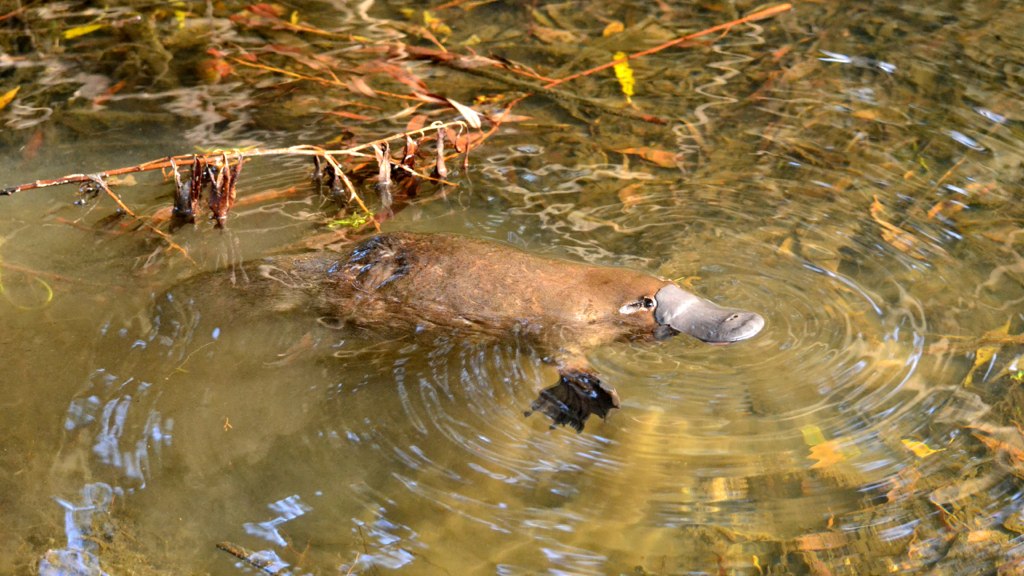
Why Do Marsupials Have Pouches?
Let’s look at one of the most well-known marsupials, the red kangaroo. At first, the kangaroo fetus develops inside one of its mother’s uteri (female kangaroo have two), like placental mammals. But then the kangaroo baby is born after only about one month’s gestation. At this stage in development, the joeys are hairless, with closed eyes and undeveloped back legs.
After crawling out of their mother’s vagina (female kangaroo have three), the jelly bean-sized joey then has to climb all the way into the pouch, where it latches on to one of four nipples. After about 6 months the baby roo is old enough to start exploring outside of its mother’s pouch. After about 8 months the joey will leave the pouch for good and gradually switch to a grass-based diet by the time it reaches 12 months in age.
(Check out this story for more on the weird ways marsupials reproduce.)
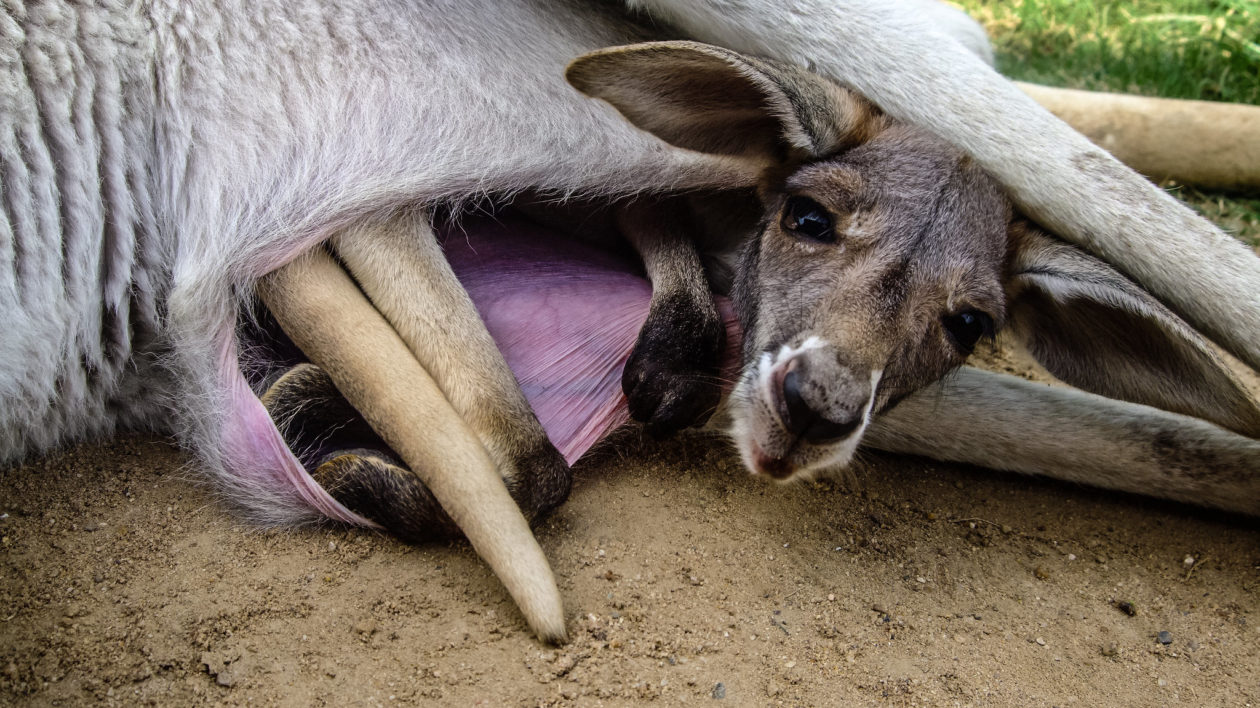
As you might expect, not all marsupial pouches are the same. Wombats and marsupial moles, which are burrowing marsupials, have backwards-facing pouches so they don’t fill up with dirt as the animal digs. Tasmanian devils and quolls also sport a backwards-facing pouch, and fewer teats than they have young. That means that only the first several joeys to make it to the pouch survive.
Meanwhile, koalas have a pouch that opens to the side. They also secrete antimicrobial compounds to help keep their pouch clean during the breeding season. And America’s Virginia opossum has a pouch that resembles a circular hole on their underside.
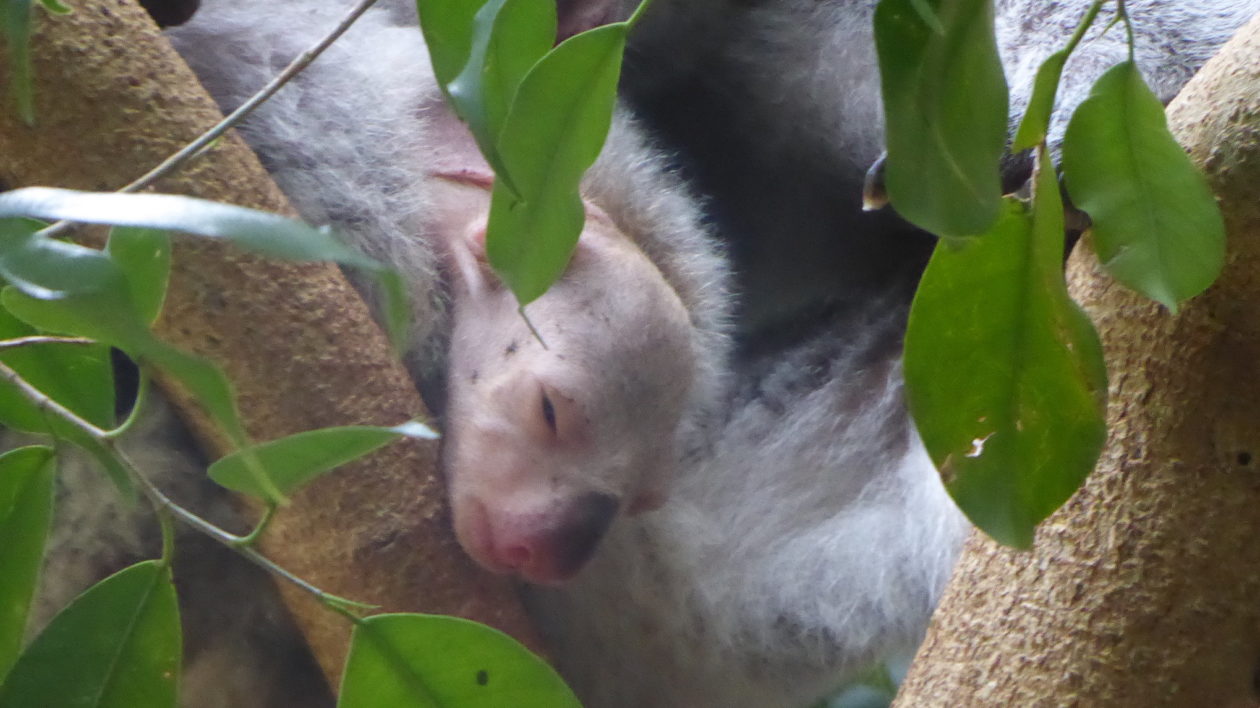
Other species, like phascogales, develop a temporary skin fold (or pseudo-pouch) around their nipples during reproduction. (Interestingly, the platypus and echidna do the same thing, despite being monotremes.)
The water opossum, found in Central and South America, is the only living species where both females and males have pouches. Males use their pouch to hold and protect their genitals during swimming. (The thylacine, extinct since the 1930s, also share this trait.)
And some species do away with pouches altogether. In place of a pouch, the gray short-tailed opossum has 13 retractable nipples.
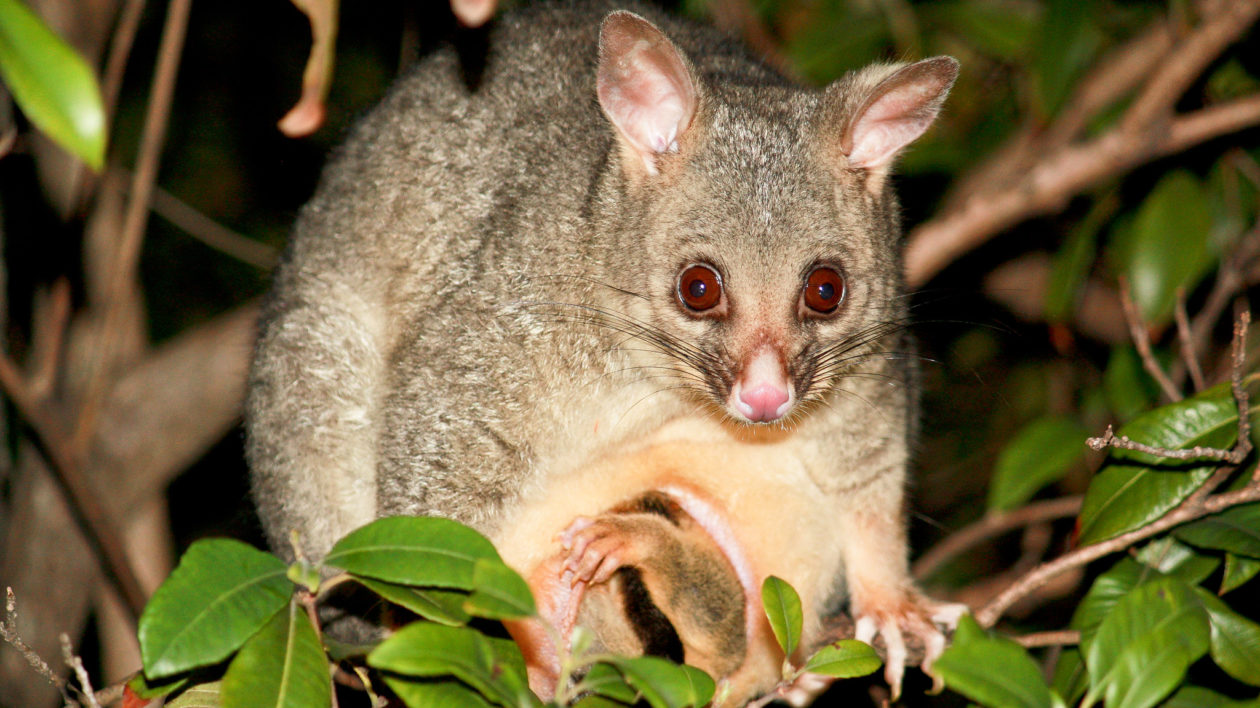
Marsupial pouches come in a wide array of types, but why have a pouch in the first place? First, marsupials are not an evolutionary stepping-stone between monotremes and placentals. They simply represent a different evolutionary strategy for developing young.
Placental mammals vary widely in how long they gestate their young, how developed the young are at birth, and how much nursing and care they need to survive on their own. For example, African elephants gestate their young in utero for nearly 2 years, whereas a mouse gives birth after about 19 days. Human infants take more than a year to learn how to walk and run, whereas a newborn horse can stand immediately and keep pace with its mother in just a few hours.
Marsupials simply take a different route, with a very short in-utero gestation followed by considerably longer period of fetal development inside the pouch, which acts like a uterus as the joey continue to develop. Bird and reptile young develop inside an egg, placental mammals inside a uterus, monotremes in a combination of egg and pouch, and marsupials in a combination of uterus and pouch.
This uterus+pouch combination does come with some evolutionary constraints, notably the need for forelimbs to crawl from vagina to pouch. Scientists hypothesize that this limitation might be why no marsupials ever evolved wings, flippers, or hooves, whereas placental mammals evolved all three.
At the same time, scientists also think that utilizing a pouch might have helped marsupials diversify into ecological niches that placental mammals, burdened by un-developed young, can’t easily occupy.

Where Do Marsupials Come From?
The short answer — South America. (Sort of.)
Genetic analysis suggests that all living marsupials originated from South American ancestors. But the first true marsupial species — as far as we can tell from the fossil record — was Peradectes minor, which lived in modern-day Montana 65 million years ago. Yes, Montana.
Early marsupials then spread into South America by way of a land bridge, while their northern relatives went extinct. Living alongside terror birds, marsupials dominated the ancient mammalian life in South America, much like they dominate Australia today.
One group — the opossums — re-colonized North America and eventually gave rise to the only marsupial species in the US and Canada: the ugly-but-adorable Virginia opossum. (It’s worth noting that opossums are from the Americas, while possums (sans “o”) are found in Australia and New Guinea.)
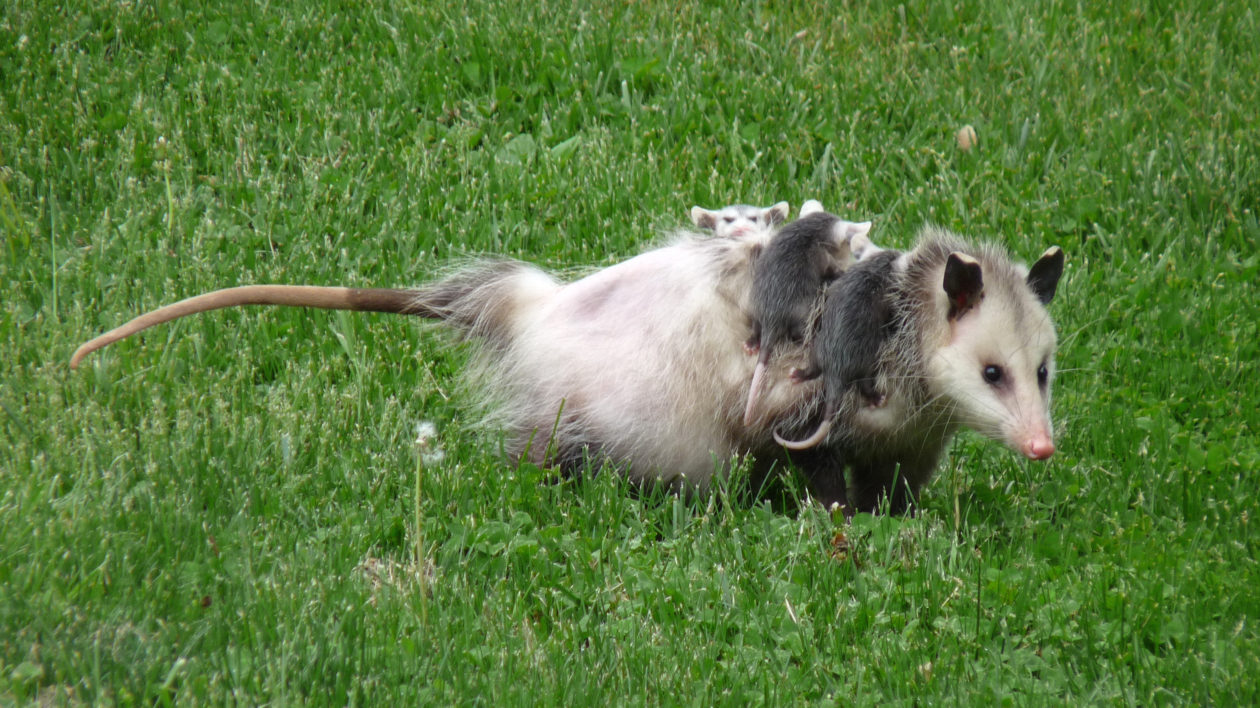
Why Are There So Many Marsupials in Australia?
Australian marsupials are a case study in just how awesome evolution can be.
Scientists think that all Australian marsupials evolved from a single South American species that journeyed from South America to Australia via Antarctica, when the three continents were connected as the supercontinent Gondwanna. The closest living relative to this colonizer is the monito del monte, a mouse-sized opossum has a prehensile tail and lives in rainforest bamboo thickets in the southern Andes.
Meanwhile, Australia’s first native marsupial, Djarthia, was a tiny mouse-like mammal that lived about 55 million years ago.
Now here’s where it gets interesting: fossils indicate that the monito del monte is descended from a Djarthia-like ancestor. How can that be? Scientists suspect that at least one native Australian marsupial made the return journey from Australia back to South America before the continents split, eventually giving rise to the modern-day monito.
The Australian fossil record is notoriously patchy, so hopefully additional discoveries will help sort out the finer points of Australian marsupial origins.
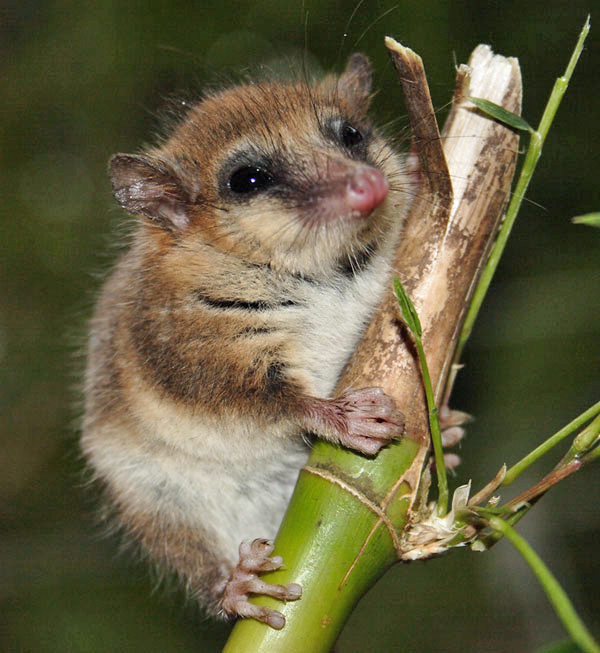
Scientists are also unsure as to why marsupials thrived upon reaching Australia. Until recently, the prevailing theory was that early placental mammals in Australia had gone extinct, leaving a multitude of ecological niches wide open for marsupials.
But the same scientists that discovered the link between Djartia and the monito del monte also discovered fossils of a placental mammal (or a placental relative) dating from 55 million years ago, indicating that there were still some placentals kicking around Australia when marsupials arrived.
Either way, in Australia marsupials once again evolved into a myriad of different species, from massive red kangaroos, the bunny-like bilby, mouse-like dunnarts, koalas, Tasmanian devils, and tree-kangaroos. And Australia had even more strange marsupials that have since gone extinct: the marsupial lion (exactly what it sounds like), the marsupial tapir, and Diprotodon optatum, a rhinoceros-sized relative of the wombat that was the largest marsupial ever to have lived.
Today, South America still has more than 100 marsupial species. But when it comes to variety or weird factor, you just can’t beat the land down under.
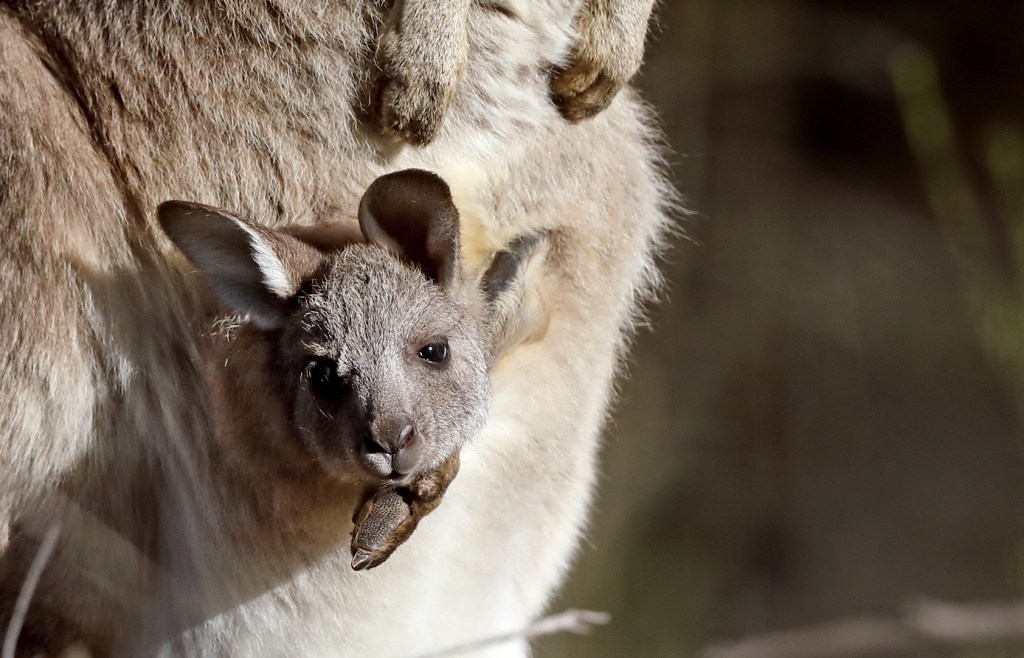



You are wonderful! Thanks a million for the lecture ??? Best wishes from a mid-grade teacher in Norway ???
Fascinating! I never knew?
Justine, I’ve always wondered why in North America, we use the word opossum and in Australia it’s possum. Can you shed any light on this? Thanks, loved this article.